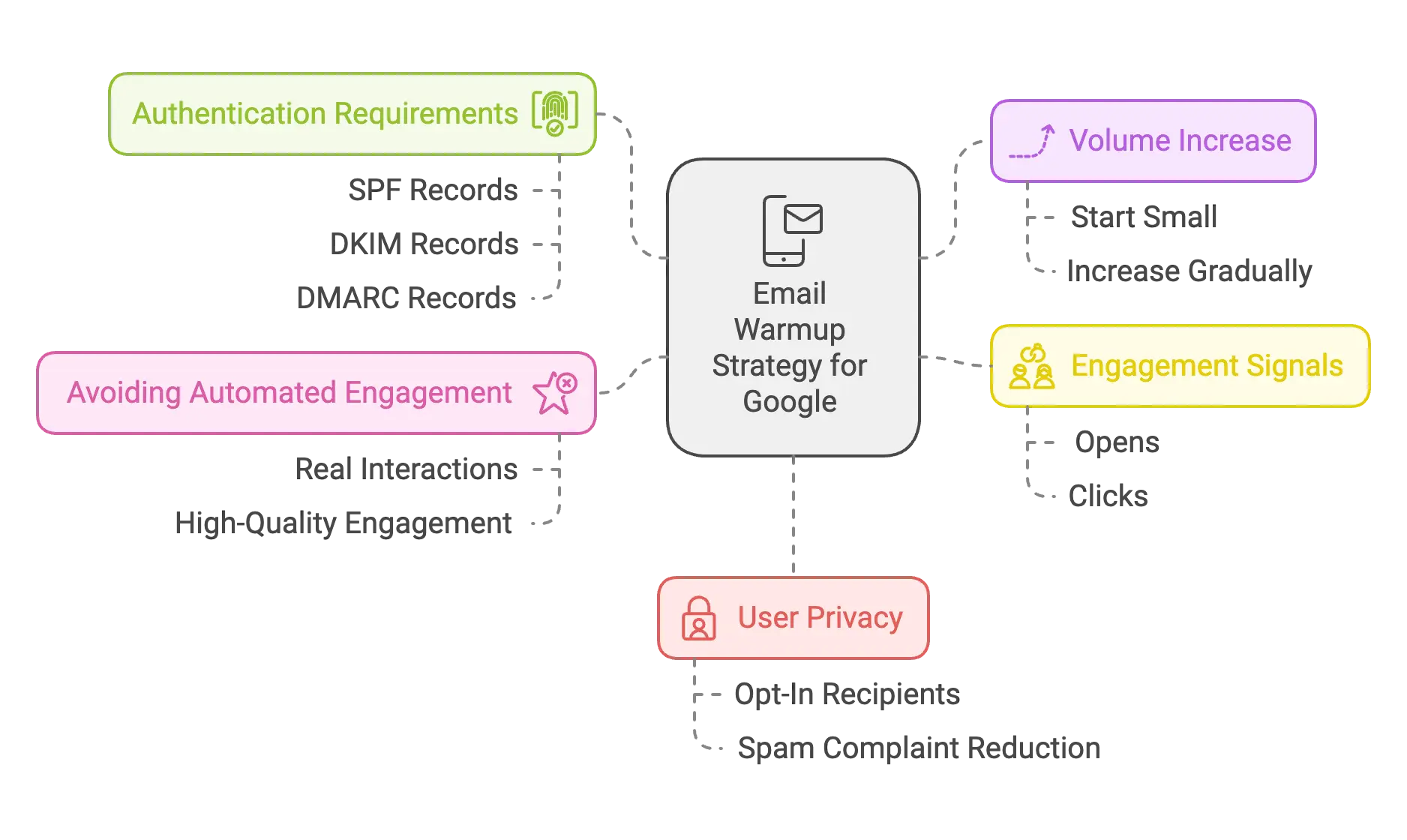
Email Warmup and Google’s Policies
Google’s email policies, especially for Gmail, are strict about security and user protection, so aligning your email warmup strategy with these guidelines is essential for deliverability. Here’s what to keep in mind when warming up an email for Google’s ecosystem:
1. Authentication requirements
- Google relies on SPF, DKIM, and DMARC records to authenticate senders. These records prove your domain’s legitimacy and reduce the chances of emails being flagged as spam. Without them, Google may automatically classify your emails as suspicious. Ensure your domain has these records correctly set up before starting warmup
2. Gradual volume increase and engagement signals
- Google carefully watches for sudden spikes in email volume, which can look like spammy behavior. During warmup, gradually increase your sending volume, starting small and slowly working up over a few weeks. This method allows Google’s algorithms to track positive engagement from real recipients, such as opens and clicks, which signals legitimacy and supports inbox placement.
3. Avoiding automated or fake engagement
- Google’s algorithms can detect and penalize accounts that use low-quality or automated engagement tactics to simulate interactions. If your warmup process involves engaging with real, high-quality interactions, such as genuine replies, Google will view these as positive signals. Avoid tools or methods that rely on automated responses, as these could harm your reputation rather than help it. Avoid tool using fake network of inboxes.
4. User privacy and consent
- Google’s policies are also strict on privacy. Only send to recipients who have opted in or shown genuine interest in your emails, as unsolicited emails increase the likelihood of spam complaints. High complaint rates lower your reputation and make it harder to maintain good deliverability with Google’s strict filtering.
